
medalnet
-
Posts
897 -
Joined
-
Last visited
-
Days Won
3
Content Type
Profiles
Forums
Blogs
Gallery
Events
Store
Posts posted by medalnet
-
-
Isn't this an unusual attachement?
[attachmentid=43229]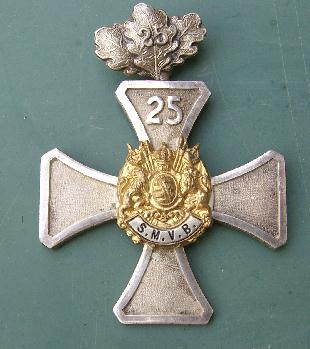
 0
0 -
The piece turned up.
Thanks for all the support.
0 -
On May 24, 2006, the following order disappeared after it had been sold for 9,500 ? at auction in London at Morton & Eden in association with Sotheby's:
661 Germany, Prussia, Order of the Red Eagle, Civil Division, Non-Christian issue (post 1861), Third Class breast badge, in silver, with gold and enamel centre, 51 mm, extremely fine and extremely rare Estimate - 2000-3000 ?
[attachmentid=41486]I will have very detailed pictures in a few days showing every detail there is. The accurate weight is also availiable.
The order can be easily identified. I have only known of 2 remaining examples.
Any help you may be able to provide will be appreciated.
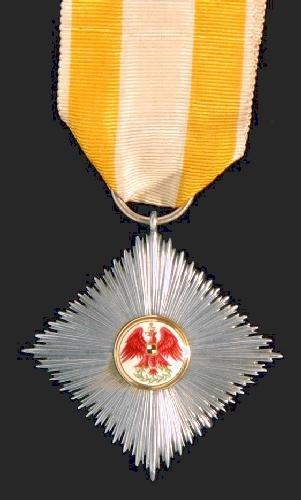
 0
0 -
...well, I have all of them in my library. A pretty safe source for pictures of real imperial German and other imperial orders and decorations. Better then the big Nimmergut in many cases.
Andreas
0 -
Dear Paul,
I do not think it is a gray area. The copyrights were transfered and are held by those that currently reprint the original. I would advise to get in contact with them in order to legaly move your project ahead.
I do not think we want chinese circumstances here in the US?
Andreas
0 -
...CDs work better for searchable data.
Jeff,
I totaly agree with this statement. The Ranklist are fine on CD. They would be better as searchable data base, but regular books on CD - not for me.
Andreas
0 -
No guessing required here, I believe. It is the Caspari group. A very good friend of mine has it now in his collection.0
-
...well, since you asked...here a 4th class with swords:
[attachmentid=38276][attachmentid=38275]
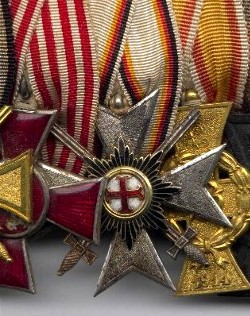

 0
0 -
The picture above did actually come from a book printed in 1939: "Wir jagten den Feind" (we hunted the enemy), written by Hans Brzenk. He lists several fighter aces with his biographical data in the back of the book. This is the part for Ernst Kepmfer:
Geb. December 16, 1894 in Mainz. He went as volunteer to the infantry to war in 1914 right after his Abitur and after finishing with middle school in Wittenberg, the cadets corps Wahlstadt and Realgymnasium in Berlin-Lichterfelde. He took part in those battles in Flandern as being part of the I.R. 57, also with the Landwehr-Ersatz-Regiment 1 and later with the I.R. 382 in battles at Metz (Priester- and Alliywald) being a Platoon-(Zug-) and later Brigade(Kompanie) leader, finally as Leader of a mine-thrower-brigade (Abteilung).
He was promoted to be officer in 1915, and reported to the airforce late 1916. After 7 weeks of school he was send to the Flieger-Erstazabteilung Breslau and Grossenhain being an Observer during the summer of 1916 at Armee-flugpark 1 Fliegerabteilung 9. He then took part in battles over the Somme, in Lorraine and during the battle in Champagne and in Verdun mostly as long range observer.
At Verdun he was shot down and was wounded severely late autumn of 1917: Skull and jaw was broken. He recovered during the winter of 1917 in Fea Altenburg and reported back in spring of 1918 to his old commodore who had been promoted to Gruppenf?hrer of Flieger 21 in the meantime. He was then Fliegerverbindungsoffizier and later Adjutant and joined in the advancement battles towards Armentiers, the break through battle in the west and all retreats until the end of the war. He later fought with several Freikorps in the home country.
Medals: Iron Cross 1st and 2nd class, House Order of Hohenzollern, Observers Badge, and others.
He studied political economics after the war and joined the "Deutsche Presse" (a newspaper) as volunteer. Being the editor later on he worked with the College Organization "German Art" on the magazine "Das junge Deutschland" and became editor and general manager of the newspaper "Ringen des Deutschtum". Branded as a "v?lkisch" editor he did not find a reasonable position and changed jobs to become a book dealer after the depression (Inflation). He also worked as editor of a labor camp paper but is now director of one of the leading publishing houses.
The mentioning of his freicorps activity lead me to believe that the unknown badge must be a Freikorps badge.
0 -
It does look like the ugly Hindenburg Cross was attached to an extention made to the bar in 1934. Not uncommon.0
-
A very nice star indeed !
 0
0 -
...and here after a long wait the man himself:
[attachmentid=37623]
 0
0 -
I agree with Tim. I have encountered this numerous times. Markings of a known order maker/distributer on a piece made by somebody else. It absolutely logical that a Bavarian manufacturer would not make Prussian decorations. The tooling would be way to expensive to justify making them for a few non Bavarian orders. He would contact his collegue and order one piece. Shurley everybody had a least one PlM for display purposes.0
-
This would be the 4th dimension to medal collecting. Great display!0
-
David,
it is definetly possible. The saxon manufacturers had very specific characteristics making those decorations.
Andreas
0 -
What is the 1930 Milit?r-Wochenblatt?
It is a weekly circular like a newspaper reflecting on items of interest for the military. You will find the latest list of medal recipients, adds for having them mounted etc.
The listing of the newly honored soldiers was many times the basis for some statistics on orders and medals for WWI. They stopped printing the Ranklists, yet published those news in the Milit?r-Wochenblatt.
0 -
I have my reservations about this Godet tag. Attached is the Godet firm history from Court Jewelers of the World by Jeffrey R. Jacobs, published in 1975.
Part 1
I just love the part where it says "...the well known author and collector". What else did he do with his new company?
 0
0 -
..., but many of these are fakes, and others offered are (at least for me) to expensive

One of the definite detail one can determine the difference between the fake and the real silver gilt ones is the laurel leaf inbetween the cross arms. The real ones are extremly 3-dimensional layered. The fake ones are completly flat, just 2 dimensional.
0 -
This is a great thread. Lots of good stuff.0
-
Believe me, I was, too, when I saw this bar the first time arround....0
-
It is unlikely but true. This was one of Tony Colson's bars. Indeed the real deal !!!!
There were 834 medals in silver awarded between 1861 and 1875.
0 -
OK, I'm confused......... Does Luftmensch have this group or does Andreas????????
Oops, typo
 I typed "to" instead of "you", sorry.0
I typed "to" instead of "you", sorry.0 -
Most amazing. I am glad you got this historial important group in the end.0
-
At last the ugliest. The quality hit list goes certanly from Scharffenberg to Roesner to Glaser & Sohn. Glaser made some really low quality but cheap pieces towards the end of WWI. One will always find those knight badges first and second class. They were also known for the golden grand cross stars!, yet the officers cross is something I have seen only once. Here it is:
[attachmentid=34685][attachmentid=34686][attachmentid=34687]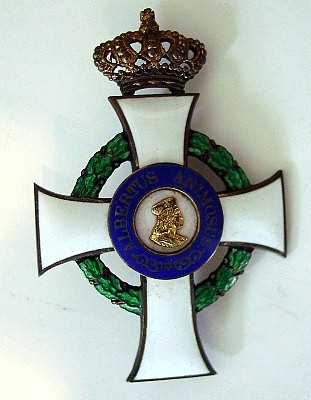
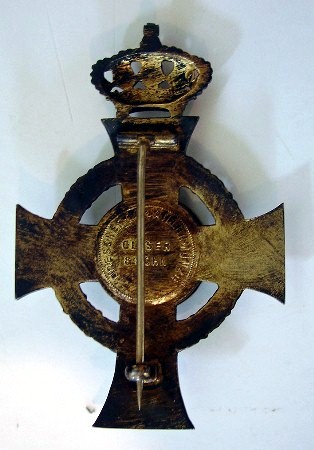



 0
0


Saxon Veterans Society
in Germany: Imperial: The Orders, Decorations and Medals of The Imperial German States
Posted · Edited by medalnet